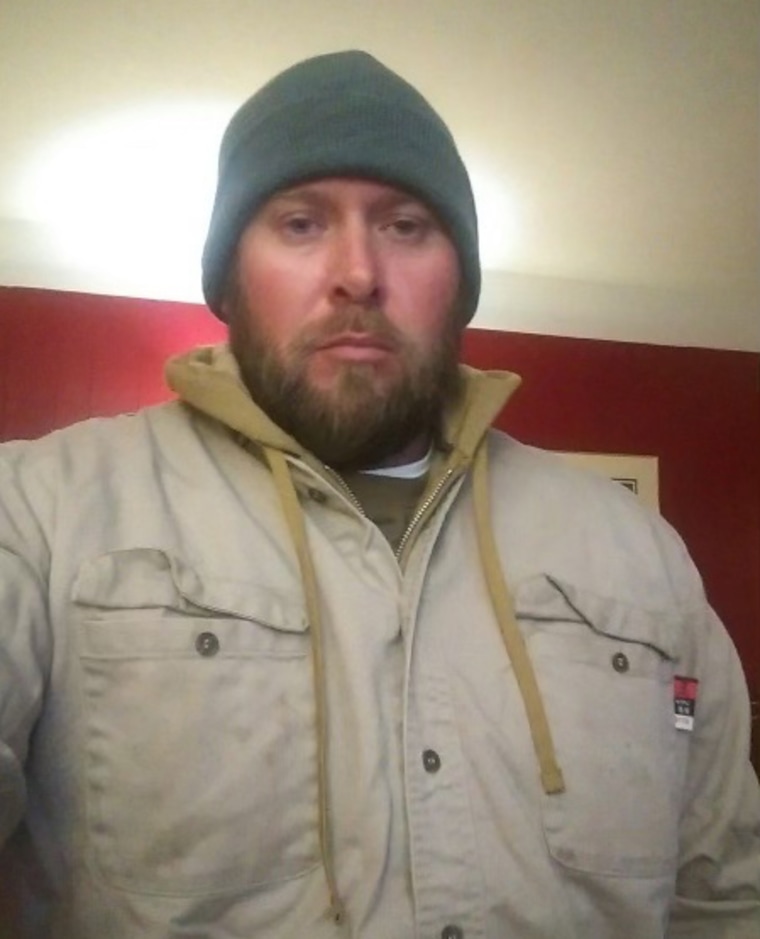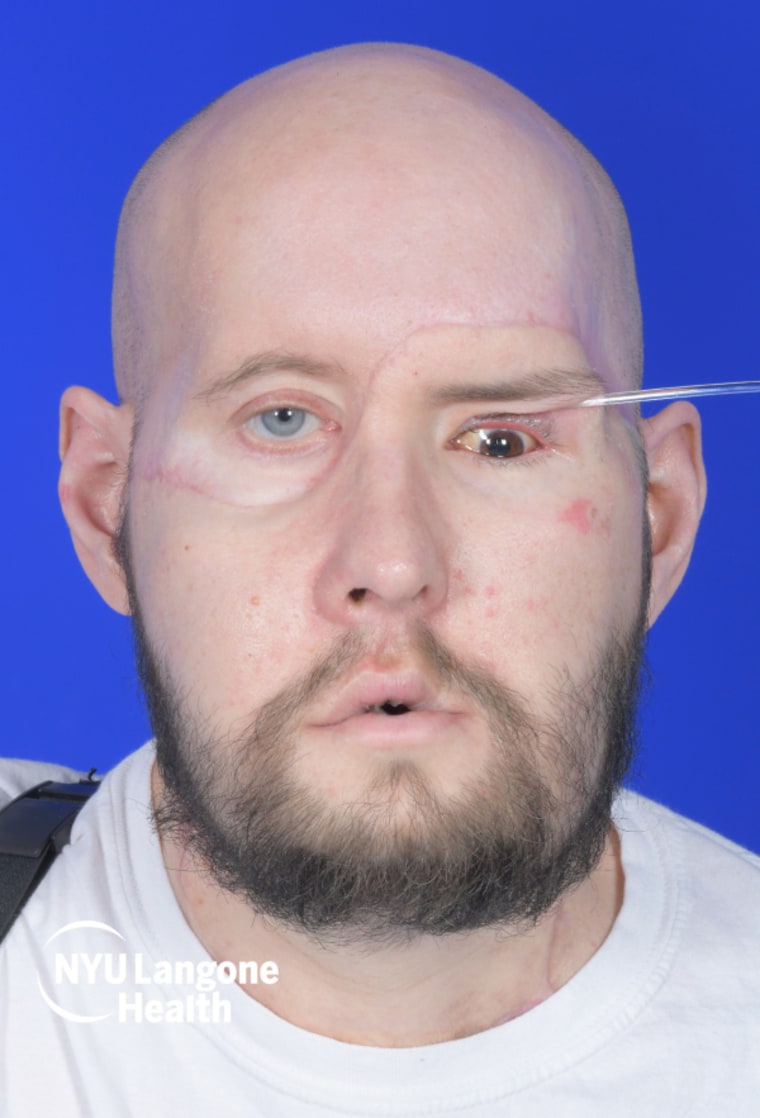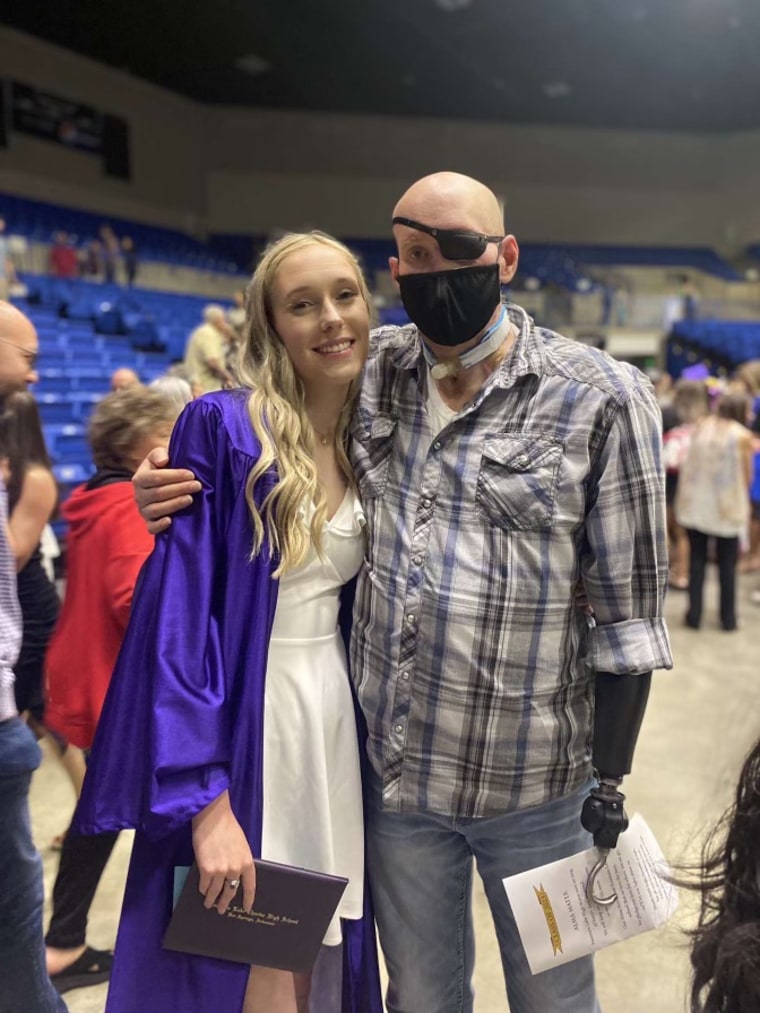Surgeons at NYU Langone Health have completed the world’s first whole eye transplant, a groundbreaking advancement many thought was impossible.
The patient, Aaron James, 46, a military veteran from Hot Spring Village, Arkansas, cannot see out of the transplanted eye, but he considers the operation a success nonetheless.
“You’ve got to start somewhere, and hopefully this will get the ball rolling on future surgeries,” James said in an interview.

In 2021, James survived what should have been a fatal electric shock while he was working as a high-voltage lineman. His face accidentally touched a live wire, causing devastating injuries, including the loss of his left eye, his nose and his lips. Only bone was left in his left cheek and his chin. Much of his left arm was also stripped to the bone.
The operation, which took place in May, lasted 21 hours and required the expertise of more than 140 surgeons, nurses and other health care professionals. In addition to the eye transplant, James also received a partial face transplant, which remains an incredibly rare procedure, with fewer than 50 face transplants having been performed worldwide since the first one in 2005.
The donated face and eye came from a single donor. The eye had never been removed from the donor’s socket, and the surrounding tissue and the optical nerve remained intact.
Still, transplanting the new eye was laborious. Blood vessels surrounding the eye are extremely small, making it a challenge to attach enough for adequate blood flow. Reattaching the optic nerve is another challenge. As part of the operation, the surgeons also injected adult stem cells into James’ optic nerve — another first — to prompt the nerve to create healthy new cells.
Five months after James’ surgery, there is healthy blood flow to the retina, the part of the back of the eye that converts light into the electric signals the brain converts into images — a major sign of vitality.

“Although there is no sight, we’ve crossed a barrier that many didn’t think was possible,” said Dr. Eduardo Rodriguez, the director of the Face Transplant Program at NYU Langone in New York City, who led the surgery. “Nothing like this has ever been attempted. There isn’t even any science published in the literature that could indicate what could be the result of such a transplant.”
The eye also has normal pressure, and it is not painful.
Infection around the brain was another major complication James was able to avoid in the crucial months after the transplant.
His body did not reject the transplant, a significant achievement — some experts believe the eye has a different immune system from the skin, so it could have been rejected.
“That is an absolutely remarkable accomplishment in itself,” said Dr. Joseph Rizzo, the director of the neuro-ophthalmology service at Mass Eye and Ear at Mass General Brigham and a professor of ophthalmology at Harvard Medical School in Boston.
More than sight
Rizzo said he believes a whole eye transplant that restores vision is still “beyond our capabilities at the moment.”
“For one to have sight at the level you’d be able to do something functional, it would require the reconnection of a fair number of nerve cells,” he said. “But the complexity is not just whether some nerve cells can regrow.”
Roughly 1.2 million nerve fibers connect each eye to the brain, and those nerves are not connected in a random fashion. “Point A has to connect to point A,” Rizzo said.
During brain development, a complex system of interactions forms specific pathways that connect points on the retina to points on the brain, he said. The adult brain does not have these same systems, at least not in a robust way.
“The public should not be imagining that vision will be restored at this point, but from a scientific standpoint, even if they were able to get a small number of nerve cells to grow back to the brain, that would be a groundbreaking accomplishment,” Rizzo said, noting that full vision restoration, if ever possible, is still likely to be a long way from reality.
Rodriguez said that restoring sight in James’ left eye through a whole eye transplant was a moon shot from the get-go but that performing the surgery provided other benefits, as well.
“Even if the eyelids were closed, it would give a better aesthetic than eye sockets that don’t have anything in it,” Rodriguez said.

James, who has had many operations since the accident, including one to remove his damaged left eye because of pain, said the face and whole eye transplant has been “life-changing” for him.
“I can go out and I’m really not stared at anymore. I just look like a normal person walking down the street,” he said.
Before the face and eye transplant, James could not taste because of the loss of his nose. He also could not eat solid food.
“I just had a little hole in my mouth. My wife had to cook soups and puree them in a blender, and I had to drink them through a straw. That’s the only thing I could eat,” James said.
James said he’s extremely grateful to the donor and the donor’s family.
“Somebody had to pass away to make this happen, and the donor and the donor’s family, I can’t imagine having to make a decision like they had to do, and it’s something I think about every day,” James said. “I really want them to know that I’m grateful and I thank them every single day.”
Rodriguez will continue to monitor signs of vitality in James’ eye in the coming years.
“You can give a person a little bit of hope and push science forward,” Rodriguez said. “It may open up a new chapter they may not have thought was possible.”






